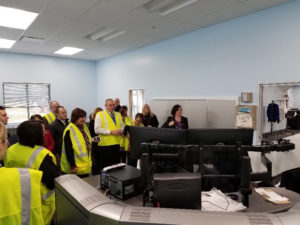Imagine sitting in your chair watching TV after a long day in the office, you look up and there’s a stranger rummaging through your refrigerator… a little disconcerting at best! You would likely stand up and ask: “Who are you and how did you get into my house?” You would likely call the Police. This is very serious. When someone invades your home you are angry, scared, and possibly indignant.
The scenario described above can happen with your computer and network without you even knowing someone is there. Who are these people and what are they doing on your computer and network?
There are different tiers of hackers who might invade your home or business computers and network without your knowledge or consent. Who are they are they? Let’s have a look.
There is not a single “typical” type of hacker, but rather 4 types or variants of hackers who might invade your computer and your network at home or work:
- Kiddie Hacker
- Corporate Hacker
- Military Hacker
- Criminal Hacker
Their motives and methods vary but often result in similar consequences:
- Stolen personal or confidential information
- Disruption of the operation of your computer or network
- Kidnapping your files and folders for ransom
Kiddie Hackers
The name sounds innocent, but the problems caused by these hackers can be debilitating or at the very least, time consuming and disruptive. This type of hacker can be the kids next door who are bored of playing video games and are just curious as to how far they can go if they attempt to walk into your computing environment. It can be your nosey neighbors who have familiarity with computers to the extent that they look for the easily available tools to penetrate your defenses (if you have them). These hackers look for the local Wireless Networks that neglected to impose security and show up as unprotected. Some go even further in their determination to invade and the results are the same. See Bryley’s IT Security Checklist for more information on how to protect your home and organization.
Corporate Hackers
These hackers are motivated and capable. They want to get information about your company or disrupt your business operations. They are usually professional IT people who have clear motives and directives. These hackers are concerned about being caught and in most cases take extreme measures to hide their activities.
Military Hackers
These are the patriots of their respective nations who are on the job 24×7 targeting other countries to find and potentially expose government intelligence and the vulnerabilities of their targets. Although they target national agencies, they will, in the process, uncover many unsuspecting individual users who might lead them to their objectives, so they are very opportunistic and aggressive. They have the tools, the time, and the determination to break into anything or anywhere they can to find their openings. This activity is common to around the world and includes players such as: US Military/Government, UK, France, Germany, Russia, China, Japan and many others. These hackers are also concerned about being caught and in most cases take extreme measures to hide their activities as well.
Criminal Hackers
DANGER. These are the truly bad guys. There are many organized criminal groups around the world who engage in hacking for profit. They are remorseless, determined, and capable. They enlist operatives who want to make a quick dollar, provide them with the tools of the trade, and take a percentage for making them capable of performing their work. This group is growing rapidly as is evidenced in the sharp rise of Ransomware and DDoS (Distributed Denial of Service) Attacks. These people are performing many of the tactics that the Military Hackers employ. They just recently stole tools used by one of our national security agencies to infiltrate computers and networks and have made them available for sale on the Internet. These are the guys who send you that email with the attachment that when opened, will encrypt every file it can find on your computer or network, and then demand payment for allowing you to regain access to your files. These are the guys who initiated the DDoS attack recently that disabled the credit card verification ability of much of the country. There is one organization suspected of being capable of targeting a victim with up to 100Gb of Internet traffic, which can completely disable the Internet access for the victim. These are the guys who seed the Internet with their specifically designed software that makes innocent users’ computers part of a BOTNET for the distribution of SPAM or a component in a DDoS attack. These are the guys who likely invaded the DNC computers this past election.
The conclusion you can reach here is that the bad guys are out there working 24×7 to invade your computer or network for a variety of reasons. You must be aware that the danger exists from a variety of sources and if you don’t exercise due diligence, they will gladly give you the motivation to do so after you’ve been violated. Unfortunately, it’s not a matter of whether you will experience an attack; it’s a matter of when. No one is completely immune, but you can protect yourself to minimize your surface of vulnerability. In most cases, these hackers want the low lying fruit. If there is a barking dog at the door when they knock, they will likely be motivated to check the house next door.
Ask Bryley how you can reduce your surface of vulnerability in your business. It can mean the difference between an inconvenient disruption and an unmitigated disaster. Call us at 844.449.8770 or email us at ITExperts@bryley.com. We look forward to hearing from you.



 April 11, 2017 — Bryley Systems is pleased to announce that it has been honored by Channel Partners, with the 2017 Channel Partners 360° Business Value Award. We are one of only 25 technology-oriented companies worldwide to receive this award, which is one of the most sought-after in the industry.
April 11, 2017 — Bryley Systems is pleased to announce that it has been honored by Channel Partners, with the 2017 Channel Partners 360° Business Value Award. We are one of only 25 technology-oriented companies worldwide to receive this award, which is one of the most sought-after in the industry.



